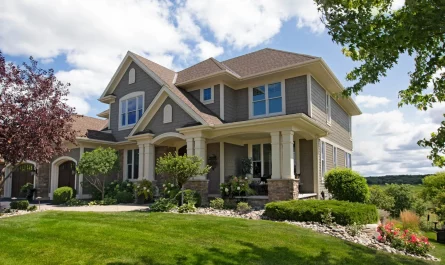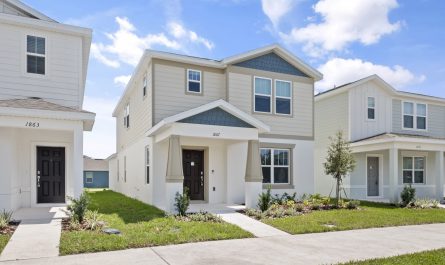Landlord insurance is an essential protection tool for property owners who rent out their homes. Landlords face unique risks that require specialized policies. This article explains what landlord insurance is and what it covers. It also discusses optional endorsements and how to manage costs. In addition, this guide compares landlord insurance with other related insurance types. It explains core coverages, outlines additional options, and provides practical tips. We will also look at claim processes and future trends. This way, you can protect your property, reduce financial loss, and maintain steady income.
Landlord insurance is designed to protect owners who rent out their property. It does not follow a typical homeowners policy. Homeowners insurance covers properties that you live in, while landlord insurance covers properties you rent out. You use landlord insurance when you earn rental income. It is meant for non-owner-occupied properties. This policy reduces risk by covering the cost of repairing damage. It also covers the loss of rental income if a property becomes uninhabitable. Moreover, it protects you from lawsuits if someone is injured on your rental property. In short, landlord insurance is a critical tool for every rental property owner.
It is important to realize that standard homeowners insurance does not cover rental activities. Landlord insurance addresses risks that occur during the rental process. It covers structural damage and other losses that may occur when tenants occupy your property. In addition, the policy provides liability protection. By having landlord insurance, you protect your investment and maintain your income stream. Therefore, every landlord should secure a policy that meets their unique needs.
The Core Coverages

A standard landlord insurance policy consists of several core coverages. The policy usually covers property damage, liability, and loss of rental income. These elements work together to form a comprehensive safety net. Each type of coverage plays an important role in protecting your assets.
Property damage coverage protects the physical structure. It covers damage from perils such as fire, lightning, wind, and hail. It also includes damage from vandalism and burst pipes. This coverage pays to repair or rebuild the structure when damage occurs. It saves you from paying for costly repairs out of pocket.
Liability coverage protects you if someone is injured on your property. If a tenant or visitor gets hurt because of your negligence, this coverage pays legal fees and medical expenses. It also covers court costs and any settlement money up to the policy limits. Liability coverage is vital because lawsuits can be financially draining. It gives you peace of mind knowing that legal expenses will be managed by your insurer. In many cases, liability issues can arise unexpectedly during a tenancy.
Lost rental income coverage safeguards your income stream when the property becomes uninhabitable. If a covered loss makes your property unlivable, this provision compensates you for the rent you lose. It helps cover mortgage payments and other fixed expenses. Lost rental income coverage ensures that you are not financially crippled during the repair period. This coverage is especially important if your rental income is your primary source of revenue. It provides a buffer against periods of vacancy due to catastrophic damage.
Optional Endorsements and Additional Coverage
Beyond the core coverages, many insurers offer optional endorsements. These add-ons tailor your policy to your specific risk profile. They can provide extra protection in areas that may not be covered by a basic policy. Adding endorsements typically increases your premium, but it makes sense if you face higher risks.
Another important option is equipment breakdown coverage. This endorsement covers failures of major appliances and mechanical systems. For example, if your HVAC system or water heater malfunctions, the policy pays to repair or replace the system. This coverage is valuable for maintaining tenant comfort and avoiding extended downtime. It can be especially useful in properties with high-end appliances that are costly to replace.
Vandalism coverage is an optional rider that protects against intentional damage. If someone deliberately defaces your property, vandalism coverage covers repair costs. This is critical if your property is in an area with a higher risk of vandalism. With this rider, you avoid significant financial loss if the property is targeted by vandals.
Additional structure coverage can extend your policy to cover detached buildings. If you have a shed, garage, or other structure used in property maintenance, this endorsement covers those areas. It ensures that every asset on your property is protected under your policy.
Legal expense coverage is another optional endorsement. It covers the costs of legal defense if you face lawsuits related to your rental property. This includes attorney fees and court costs. For landlords who are frequently involved in legal disputes, this rider can be a crucial addition.
Replacement Cost vs Actual Cash Value
When it comes to property damage, policies may pay out on a replacement cost or actual cash value basis. Replacement cost coverage pays the amount needed to replace damaged items with new ones. It does not deduct depreciation from the repair cost. Actual cash value coverage, on the other hand, factors in depreciation. This means that older items may only be reimbursed for their current value. Replacement cost is generally preferred because it ensures that you receive enough money to replace or repair the property properly. Landlords must understand which valuation method is used in their policy.
Every property owner who rents out their space should consider landlord insurance. Even if you have a single rental unit, the risks are significant. Landlord insurance is not legally required in most states, but it is highly recommended. Lenders often require proof of insurance when you obtain a mortgage on a rental property. This helps protect both your investment and the lender’s interest in your property.
Long-term rental owners need comprehensive coverage to protect against persistent risks. Tenants in long-term leases increase the consistency of your income but also expose the property to potential wear and tear over time. Even if you have reliable tenants, unexpected disasters may occur. For short-term rental hosts, policies need to address higher turnover risks. Short-term rentals often have higher premiums due to increased chances of damage. In these cases, you may need a specialized policy or additional endorsements.
How to Choose the Right Policy
Selecting the right landlord insurance policy is a process that requires careful consideration. First, shop around and get quotes from multiple insurers. Rates and coverage details differ widely, so comparing offers is essential. Use online tools and speak to independent brokers to receive unbiased recommendations. Next, evaluate your property’s risks by considering factors such as location, age, and condition. If you are in a high-risk area for natural disasters, consider additional endorsements. Then, understand all policy terms, including exclusions, deductibles, and limitations. Reading the fine print prevents surprises during a claim. Ask questions and seek clarification if needed.
It is also important to ask about discounts. Many insurers provide discounts if you install safety devices or bundle policies. Bundling landlord insurance with homeowner or auto insurance is a smart way to reduce overall costs. Finally, update your policy regularly as property values and risks change. A policy that was adequate two years ago may no longer be sufficient as costs rise. By following these steps, you can ensure that you have proper, up-to-date coverage that meets your needs.
How Much Does Landlord Insurance Cost?
Landlord insurance is generally more expensive than homeowners insurance. On average, it costs about 25 percent more due to the increased risk associated with renting out a property. Several factors influence the premium you pay. One key factor is the location of your rental property. Areas prone to natural disasters or high crime often have higher premiums. The type and age of the property also matter. Newer properties with modern safety features might be less expensive to insure than older properties that require frequent repairs.
Another factor is the coverage amount and policy limits. If you choose higher coverage limits, your premium will rise accordingly. Deductibles play a significant role as well. A higher deductible may lower your premium cost but will require more out-of-pocket expense when a claim is filed. Additionally, the number of rental units on your property affects the rate. Single-family rentals are typically cheaper to insure than multi-unit properties. If you have a history of claims, your premium may be higher. Insurers reward a clean claims history, so proactive maintenance is very important.
To manage costs, ask about bundling options. Purchasing multiple policies from one provider can lead to discounts. Regularly reviewing your policy and shopping around for quotes can also help you secure the best rate. Landlord insurance is an investment in your rental business and helps ensure financial stability when unexpected events occur.
Managing and Reducing Premiums
There are several strategies that can help reduce your landlord insurance premium. First, invest in regular property maintenance. Well-maintained properties have a lower risk of damage. Regular inspections and prompt repairs help reduce claim frequency. Keeping a detailed record of all maintenance activities is a good habit. Insurers often offer lower rates for well-maintained properties.
Another strategy is to install modern safety and security devices. Security cameras, alarm systems, and fire suppression systems reduce the risk of major losses. Many insurers provide discounts for properties that have these systems installed. Upgrading your roof, windows, and plumbing can also lower your risk profile. It is beneficial to research and invest in approved safety devices that qualify for a discount.
Bundling policies is an effective way to save money. If you purchase landlord insurance along with other policies such as homeowners, auto, or umbrella insurance from the same provider, you may benefit from a bundle discount. This not only reduces your overall cost but also simplifies your record-keeping. Regularly compare quotes from different insurers and do not settle for the first offer you receive. The market can change, so periodic review of your insurance policy is important.
Lastly, consider raising your deductible if you have the financial capacity to handle a higher out-of-pocket expense. A higher deductible often results in a lower premium. However, you must ensure that the deductible is affordable in case you need to file a claim.
Filing a Landlord Insurance Claim
Understanding the claims process is vital when damage occurs. If you suffer a loss, follow these steps. First, report the incident to your insurer immediately. Quick reporting helps accelerate the claims process and prevents further damage. Next, document the damage thoroughly by taking photos and gathering repair estimates. Accurate records support your claim and help ensure that you receive a fair settlement.
Once you have reported the loss, an adjuster will inspect your property. Cooperate fully with the adjuster to help them assess the damage. Provide all requested documentation such as photos, repair estimates, and receipts for any related expenses. It is important to understand your policy’s deductible. You must pay the deductible before your insurer pays the claim. Stay in regular contact with your insurer throughout the process. If any issues arise, communicate clearly and promptly. In some cases, you may need to negotiate the claim settlement. Legal advice or mediation might be helpful if there are disputes. A well-documented claim supports your case and can lead to a successful resolution.
Integrating Insurance with Property Management
Landlord insurance should be part of a broader property management strategy. Successful management involves maintenance, clear communication, and proper record keeping. By integrating your insurance policy with your overall management plan, you reduce risks and lower expenses over time.
Regular property inspections are key. They help identify issues before they turn into large-scale problems. Keeping detailed records of inspections, repairs, and tenant communications supports your claims process and demonstrates proactive management. Clear lease agreements that outline tenant responsibilities are also crucial. By requiring tenants to obtain their own renters insurance, you limit your liability. Well-drafted contracts help prevent disputes and promote stable relationships.
Technology plays a significant role in modern property management. Using digital tools to track expenses, monitor maintenance, and record repair histories improves efficiency. These tools help you stay organized and provide documented evidence during claims. Digital records allow for easy updates and policy renewals. Integrated systems reduce administrative burdens and enhance your insurance experience.
Bundling Policies to Save Money

Bundling your insurance policies can significantly reduce your premiums. When you purchase landlord insurance together with other policies like homeowners and auto insurance, providers often offer a discount. Bundling simplifies your administrative tasks and gives you a unified service experience. You may save money while enjoying better coverage across the board. Ask your insurance agent if bundling is available and compare quotes with and without bundled discounts. This strategy not only reduces overall costs but also streamlines policy management. Bundled policies are an efficient way to lower expenses and protect multiple assets. They make it easier to track all your insurance needs under one roof.
Risk management is essential for minimizing insurance claims and lowering premiums. Regular maintenance and proactive safety measures make your property safer. It also signals to insurers that your risk level is low. You should conduct regular inspections to identify potential issues early. Address repairs promptly to avoid larger problems later. Document all maintenance activities with photos and written records. This documentation supports your insurance claims and improves your safety record.
Clear lease agreements help define tenant responsibilities. Include clauses that require tenants to maintain cleanliness and report damage immediately. Mandate renters insurance to cover their personal belongings. Educate your tenants about proper care for the property. Communication between you and the tenant is key to reducing disputes. A well-managed property has fewer claims and lower premiums. Proactive risk management benefits both the landlord and the insurance provider. It also enhances the overall rental experience for tenants, leading to longer, more stable tenancies.
Special Considerations for Different Rental Types
Different rental property types may require additional coverage or specialized policies. For long-term rentals, a standard landlord insurance policy is generally sufficient. However, short-term rentals may require customized policies. Platforms such as Airbnb and VRBO necessitate additional endorsements. These endorsements cover higher turnover risks and potential damage from frequent guest changes. If you have a furnished rental, ensure your policy covers landlord-owned furnishings. Replacement cost coverage is recommended for high-value items. In multi-property portfolios, consider policies that offer multi-location coverage.
It is important to distinguish between landlord insurance, homeowners insurance, and renters insurance. Homeowners insurance is designed for owner-occupied residences. It covers the building, personal belongings, and liability for the owner. In contrast, landlord insurance protects the property when it is rented out. It focuses on covering structural damage, liability for rental-related incidents, and loss of rental income. Renters insurance, on the other hand, is purchased by tenants. It covers their personal belongings and additional living expenses if the rental becomes uninhabitable.
An independent insurance broker can be a valuable resource. Brokers work with multiple insurance providers. They help you compare policies and premiums. Their advice is unbiased and tailored to your needs. A broker can help you understand policy language and exclusions. They provide guidance on endorsements and deductibles. Their experience can save you time and money. By working with an independent broker, you ensure that your unique risks are addressed. They also assist with the claims process if issues arise. Using a broker is especially beneficial if you own multiple properties.
Conclusion
Landlord insurance provides crucial protection for property owners renting out their homes. It covers structural damage, lost rental income, and liability risks that are not addressed by homeowners insurance. By understanding the core coverages and additional endorsements, landlords can secure a policy that meets their unique needs. It is wise to assess your risks, shop around, and work with an independent broker. Regular reviews, proper record keeping, and investing in safety measures all help reduce premiums and risk. Technology plays an important role in modernizing policy management and claims processing.
Every landlord should treat insurance as a key element of risk management. Never rely solely on homeowners insurance when renting out your property. Instead, invest in a robust landlord insurance policy that covers all essential risks. This investment is your financial safeguard against unexpected losses and liabilities. By staying proactive and continuously managing your policy, you can ensure that your property remains protected against all foreseeable risks. The insights provided in this guide help you understand every aspect of landlord insurance so you can make informed decisions. As you review your options, make sure to take advantage of available discounts and bundle offers.
Thank you for reading this comprehensive guide on landlord insurance. We hope that the information provided will assist you in making the best decision for your rental property needs. Always consult with a licensed insurance professional to customize your policy, as each property has different risks and requirements. By taking proactive steps and managing your coverage intelligently, you secure your rental income and safeguard your investment. Your rental property is a valuable asset, and proper insurance ensures that it remains a profitable part of your portfolio for many years to come.



